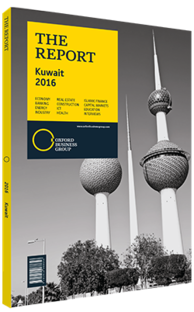Implementing Basel III requirements to change incentive structures for bank financing in Kuwait
In the wake of the 2008 global financial crisis, banking sectors around the world introduced steps to mitigate future risks and create more stress-resilient financial institutions with the Basel III regulations. Due to their effects on bank liquidity, these requirements could have important implications for Kuwait’s real estate sector. As the country’s financial institutions implement tighter capital requirements, the industry could see changes in capital availability and lending costs during the adjustment period.
Risk Management
Basel III is the latest in a series of global frameworks aimed at shoring up the banking sector’s ability to cope with economic and financial stress, creating standards for risk management and increasing transparency. The rules arose from the Basel Committee on Banking Supervision (BCBS), a supervisory authority created by the central bank governors of G10 member states in 1974. Since then, the BCBS has expanded to include over 25 of the world’s largest economies. The phasing-in of the new regulations started in 2013 and is set to continue through to 2019, according to the BCBS.
In 2014 the Central Bank of Kuwait (CBK) began to amend the calculations for the regulatory capital charge on bank loans. Basel III introduced these changes to force banks to maintain higher capital levels, thereby lessening overextension risks. Basel III also introduced new capital definitions, changing the types of assets that can contribute towards capital ratios. The rules no longer allow banks to utilise real estate collateral to this end and must meet Basel III’s higher capital holding requirements by other means.
These reforms could change the incentive structure for real estate lending and decrease liquidity. Kuwait’s financial and real estate sectors, in particular, could experience the effects of these changes due to the interrelated nature of their financial activities. Between 2008 and 2014, bank loans to the real estate sector in Kuwait grew by 59%, about double the rate of overall bank credit expansion, according to a December 2015 statement by the IMF. During the same period, unsecured consumer instalment loans, which are used to purchase or renovate homes, rose from 17.3% to 26.4% of total domestic loans, according to IMF data. In residential real estate credit, the CBK has put in place an upper limit of KD70,000 ($232,000), a maximum tenure of 15 years and a debt service-to-income ratio of 40%. Loan-to-value ratios between 50% and 70% are also in place, depending on whether the loan applies to an undeveloped plot, an existing property or a dwelling in a residential area.
Changing Landscape
The market for loans could tighten as banks adjust to the rules. Although it is unlikely that banks will completely shift away from commercial real estate investments, the changing lending environment could push them to raise their prices or fees in order to maintain profitability. The sector held strong in early 2016, with 14 commercial transactions worth KD90m ($297.7m) taking place in February, marking the first time in eight years that the commercial segment’s sales surpassed those of the residential segment, according to NBK.
So Far So Good
Bank loans have remained strong thus far. State-owned Kuwait Credit Bank (KCB), a major player providing liquidity in the sector, approved 477 loans worth KD23.2m ($76.7m) in February 2016, a significant rise on the average monthly transactions in 2015 (379.5) and 2014 (423.3). The overall increase was buoyed by loans for additions and renovations, which doubled the monthly average of 2015, according to data from the Ministry of Justice and KCB. Though the value of approved loans fell 27% year-on-year in June 2016, this was attributed by NBK to seasonality and shorter working hours during Ramadan rather than economic factors. Indeed, although the long-term implications are still unclear, short-term results have been mainly positive, lifting hopes that the transition to Basel III could be a smooth one.
You have reached the limit of premium articles you can view for free.
Choose from the options below to purchase print or digital editions of our Reports. You can also purchase a website subscription giving you unlimited access to all of our Reports online for 12 months.
If you have already purchased this Report or have a website subscription, please login to continue.

